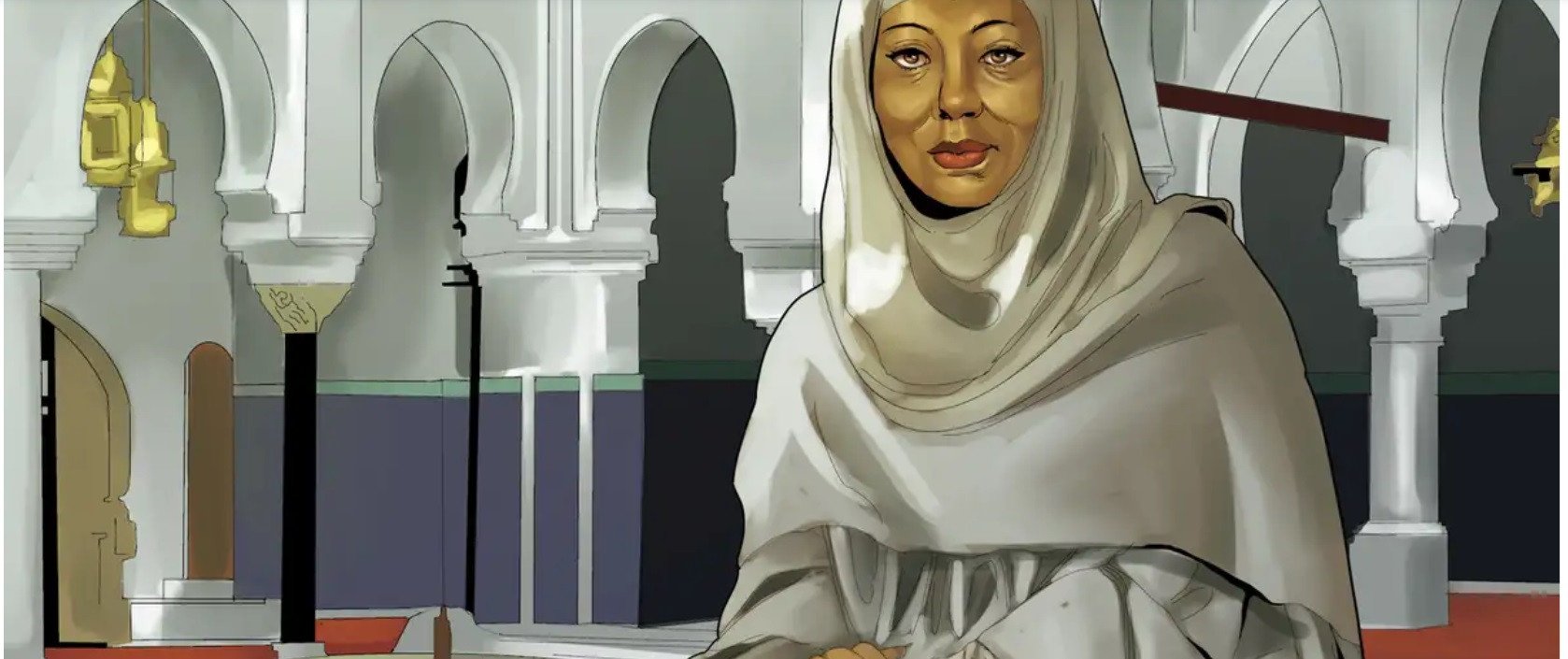Today, two factors that are widely recognised as the main reasons why civilisation of Muslims lags behind those of others are lack of education among the populace and backwardness of their women. The situation obtaining in the Muslim world during what is termed the Golden Age of Islam was, however, far better as people seemed to attach considerable importance to education then, and women played an active role in society.
A case in point is the world’s oldest university that is still functioning and which was founded by a Muslim woman, Fatima al-Fihri, in Fez, Morocco. This university was set up in 859 AD, that is a whopping 229 years before the University of Bologna, Italy, which was established in 1088 and is recognised as the oldest one in Europe.
The official website of Guinness World Records has mentioned Fatima al-Fihri’s institution — called the University of Al-Qarawiyyin (also spelled as Kairueein and Al-Kairaouine) — under the headline of “oldest higher-learning institution”. The website describes the university as “the oldest existing, and continually operating educational institution in the world…”.
The Guinness World Records is not the only reputable organisation that recognises the ancient university in Fez as the oldest one in the world; the UNESCO also does so. The website of Oxford Scholastica Academy has placed it on top of its list of 15 oldest universities, above both the University of Bologna and the University of Oxford.

To be clear, universities may have been set up at some ancient sites much before the University of Al-Qarawiyyin, but the institution in Morocco holds the record of continuously imparting education since its founding. It is also recognised as the first degree-awarding educational institution.
Let’s turn now to the remarkable personality of the founder of University of Al-Qarawiyyin. Research carried out by academics and journalists of repute shows that Fatima al-Fihri was born in about 800 AD into the family of Mohammed Bnou Abdullah al-Fihri, a rich merchant who migrated to Fez (from what is now Tunisia) during the reign of Idris II.
When her father and husband died, she inherited a large fortune. Being a strong believer, she decided to spend this money on building a mosque that her community badly needed. She is said to have started her construction project in Ramazan of the year 254 of Hegira (or Hijra), which corresponds to 859 AD. This mosque was named the Mosque of Al-Qarawiyyin after its founder’s birthplace in Tunisia.
By the 10th century, the mosque had cemented its place as the first religious institute and the largest Arab university of North Africa as it attracted a lot of students as well as academics. Historic documents confirm that conferences and debates were regularly held there. They also show that the institution boasted a number of libraries.

The subjects taught there ranged from natural sciences to languages to astronomy. The Manchester University Press (MUP) says: “Unsurprisingly, numerous notable scholars have studied at this stellar institution. Rumour has it that even Gerbert of Aurillac — better known as Pope Sylvester II — studied at Al-Qarawiyyin, and it is he who is given the credit of introducing Arabic numerals (that we use to this day) to the rest of Europe.”
MUP points out the ancient university’s library boasts over 4,000 manuscripts, including Ibn Khaldun’s 14th-century text Muqaddimah. “The library recently underwent refurbishment, pioneered by female architect Aziza Chaouni, who worked to renovate the library and give it a face-lift.
“The library of Al-Qarawiyyin is now open to the public (after renovation) and, amongst other treasures, exhibits Fatima al-Fihri’s original diploma — on a wooden board!” The visionary woman studied Islamic Jurisprudence and mathematics at her own university. According to a research paper, her contributions to mathematics education are recorded in ‘Rawd al-Qirtas’, a history book written in Arabic in 1326 AD by the 14th-century historian Ibn Abi Zar.
 Several scholars agree that the University of Al-Qarawiyyin was based on the concept of higher education as we know it today. That’s the reason why it helped formulate a framework that was emulated in Europe later.
Several scholars agree that the University of Al-Qarawiyyin was based on the concept of higher education as we know it today. That’s the reason why it helped formulate a framework that was emulated in Europe later.
The 1001 Inventions, the international organisation set up with the aim of promoting scientific and other achievements made by Arabs, has mentioned Fatima al-Fihri under its series of articles entitled “Extraordinary women from the Golden Age of Muslim Civilisation”.
The pioneering lady is respected greatly even today, especially in Fez. In 2017, a prize was instituted in Tunisia in her honour, which promotes professional training of women. An academic programme and a scholarship given to students from Europe and North Africa have also been launched to honour her great legacy.
Nizamuddin Siddiqui is an author who teaches journalism at Hamdard University, Karachi
All facts and information is the sole responsibility of the writer
